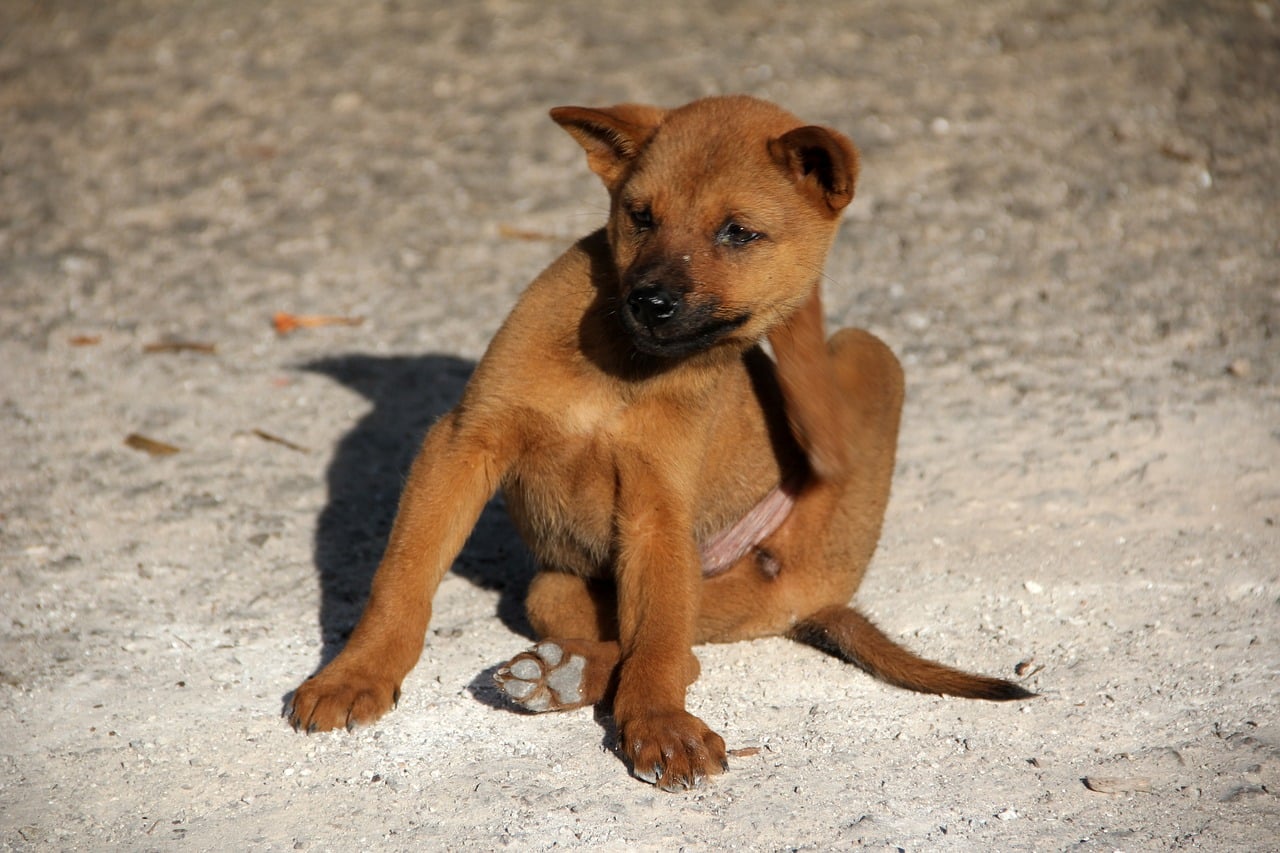The large Midwest region — including Illinois, Ohio, Michigan, Indiana and other states — typically has cool-to-warm springs, hot-but-not-too-hot summers and very cold winters. Fleas and ticks abound, but dog parents can protect their pets and homes, experts say.
Fleas on dogs in the Midwest
Although dogs can get fleas at any time of year, flea season usually starts in May and goes through to winter, with peak flea times happening in September, October and November, according to Prairie View Animal Hospital in DeKalb, Illinois. You can typically stop flea-prevention treatments on your cats once the temperature consistently dips below the freezing point, according to the clinic’s website, pvahosp.com.
Flea infestations are much more common in the home than tick infestations, says Dr. Michelle Matusicky, D.V.M., assistant professor — practice at The Ohio State University’s College of Veterinary Medicine.

Ticks on dogs in the Midwest
Ticks aren’t entirely an outdoor problem. The brown dog tick can actually complete its entire life cycle indoors.
In the Midwest region, dogs are most likely to encounter the American dog tick, black-legged tick (also known as the deer tick) and brown dog tick, especially during the warmer months, starting in the spring. According to the Illinois Department of Public Health, people and pets in that area may also clash with the lone star tick, and the winter tick.
Preventing fleas and ticks on dogs in the Midwest
Dr. Matusicky advises dog parents to focus on prevention, as that is much easier than treating a flea or tick infestation that creates a household nuisance. Your dog will also be much happier to be spared the hair loss, itching, skin infections and other maladies.
“From a financial standpoint, the cost of prevention alone is going to be cheaper than multiple trips to the vet for skin infections or other ailments that these ectoparasites have caused,” she says.
More recommendations for preventing fleas and ticks on dogs:
- 10 Tips to a Flea-Free Home
- 5 Home Remedies for Fleas on Dogs
- Let’s Talk Tick Paralysis in Dogs: Symptoms, Diagnosis and Treatment
- Lyme Disease in Dogs: Causes, Symptoms and Treatment
Featured Image Credit: Peggy_Marco, Pixabay










